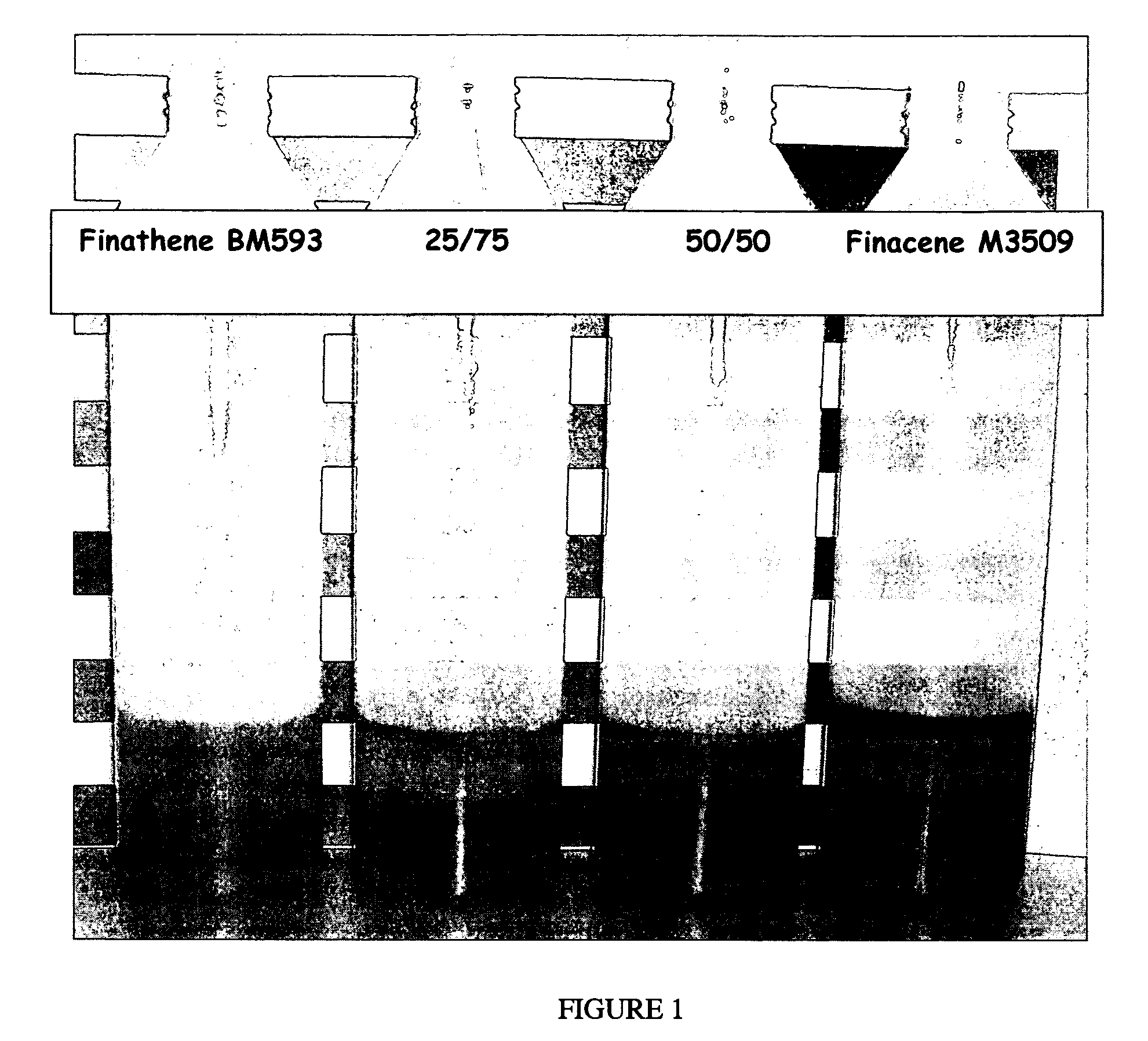Polyethylene blends with good contact transparency
a technology of polyethylene blends and transparent polyethylene, applied in the field of polyethylene blend production, can solve the problems of poor processing ability, poor contact clarity and gloss of most high density polyethylene (hdpe), and lack of contact clarity and gloss of most high density polyethylene (hdpe). good optical properties
- Summary
- Abstract
- Description
- Claims
- Application Information
AI Technical Summary
Benefits of technology
Problems solved by technology
Method used
Image
Examples
examples
[0059]Several polyethylene blends have been prepared from a metallocene resin R1 sold by ATOFINA Research under the name Finacene® M3509 and a bimodal Ziegler-Natta resin R2 sold by ATOFINA Research under the name Finathene® BM593.
[0060]The properties of the starting resins are summarized in Table I.
[0061]
TABLE IResinR1R2Density (g / cm3)0.93450.9579MI2 (dg / min)0.93—HLMI (dg / min)28.527.7Mn (Da)3213312329Mw (Da)81318166544D2.513.5
The blends were prepared by melt blending, using respectively 10, 25, 50, 75 and 90 wt % of the bimodal Ziegler-Natta resin R2, the remainder being the metallocene-prepared polyethylene resin R1, and they were pelletized on a Thoret extruder.
[0062]Bottles were then prepared on a Krupp Kautex KEB 5-430 blow molding machine from dry-blended pellets. The bottles' characteristics were as follows: weight=20 g, capacity=430 mL and wall thickness=0.5 to 0.7 mm.
[0063]The blow molding conditions were as follows: screw diam=40 mm, tool=13 / 12 mm, screw comprising 11 zone...
PUM
| Property | Measurement | Unit |
|---|---|---|
| melt index MI2 | aaaaa | aaaaa |
| density | aaaaa | aaaaa |
| melt index MI2 | aaaaa | aaaaa |
Abstract
Description
Claims
Application Information
 Login to View More
Login to View More - R&D
- Intellectual Property
- Life Sciences
- Materials
- Tech Scout
- Unparalleled Data Quality
- Higher Quality Content
- 60% Fewer Hallucinations
Browse by: Latest US Patents, China's latest patents, Technical Efficacy Thesaurus, Application Domain, Technology Topic, Popular Technical Reports.
© 2025 PatSnap. All rights reserved.Legal|Privacy policy|Modern Slavery Act Transparency Statement|Sitemap|About US| Contact US: help@patsnap.com



